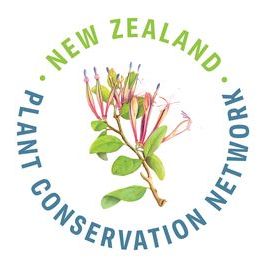Species
Trilepidea adamsii
Etymology
adamsii: Named for James Adams (1839-1906) an exceptional amateur botanist who established the Thames High School. In 1906 he died suddenly whilst still the headmaster of the high school. He is buried in the Tararu Cemetery, Thames. James Adams was a friend of the first Auckland Museum Director Thomas Cheeseman whom he often accompanied in the field. Cheeseman commemorated Adams contributions to New Zealand Botany with the species Brachyglottis adamsii, Celmisia adamsii, and Trilepidea adamsii. His granddaughter was Jacqueline Nancy Adams (1926-2007) botanical illustrator, artist, botanist and phycologist whose name is also commemorated by a number of marine seaweeds.
Common Name(s)
Adams mistletoe
Current Conservation Status
2012 - Extinct
 Conservation status of New Zealand indigenous vascular plants, 2012
Conservation status of New Zealand indigenous vascular plants, 2012
The conservation status of all known New Zealand vascular plant taxa at the rank of species and below were reassessed in 2012 using the New Zealand Threat Classification System (NZTCS). This report includes a statistical summary and brief notes on changes since 2009 and replaces all previous NZTCS lists for vascular plants. Authors: Peter J. de Lange, Jeremy R. Rolfe, Paul D. Champion, Shannel P. Courtney, Peter B. Heenan, John W. Barkla, Ewen K. Cameron, David A. Norton and Rodney A. Hitchmough. File size: 792KB
Previous Conservation Status
2009 - Extinct
2004 - Extinct
Authority
Trilepidea adamsii (Cheeseman) Tiegham
Family
Loranthaceae
Brief Description
Extinct shrub to 1m wide growing on other trees with pairs of fleshy leaves and clusters of tubular long flowers that are greenish yellow striped with red or all pinkish. Leaves 10-60mm long by 30-40mm wide, of various shapes. Flowers expanded slightly at the middle. Fruit red, 8-9mm long.
Flora Category
Vascular - Native
Structural Class
Dicotyledonous Trees & Shrubs
Synonyms
Loranthus adamsii Cheeseman, Elytranthe adamsii (Cheeseman) Engl., Trilepidea ralphii Tiegham
Distribution
Endemic. North Island only, where it was once found from the Waipoua River to the Waikato and Coromandel Peninsula. Also recorded from Great Barrier and Waiheke Islands. Historic records indicate that this species was never common. The last specimen to be collected was made in 1954 from Sanitorium Hill (Maungakawa) in the Pakaroa Range, east of Cambridge.
Habitat
Semi-parasitic on mamangi and other Coprosma species, red mapou, and wharangi, probably restricted to coastal and lowland kauri forest margins and associated open, seral shrubland.
Features
Hemi-parasitic, glabrous, shrub up to 1 m diam. Branchlets terete. Leaves opposite, sessile or on stout petioles 2 mm long. Lamina (10-)50(-60) x 30(-40) mm, dark green above, pale green or reddish beneath; fleshy-coriaceous, broadly obovate, obovate, elliptic-oblong to rhomboid, margins recurved, veins indistinct. Inflorescence axillary, 2-4-flowered cymes. Peduncles stout, fleshy, almost woody, 10-15 mm. Flowers 30-40 mm long, sessile to subsessile, subtended by a small bract and two bracteoles. Receptacle-rim minutely 4-toothed. Tepals 4, greenish-yellow with marginal red stripes soon fading to a uniform pinkish-red, initially dilated at middle, splitting for c.1/4 length, often with dorsal split to base. Anthers narrow, basifixed, style initially = to perianth length, but elongating well beyond tepals at anthesis. Stigma capitate. Fruit red, fleshy, ellipsoid, 8-9 mm long. Hosts: Coprosma arborea Kirk, Melicope ternata J.R.Forst et G.Forst. and Myrsine australis (A.Rich.) Allan.
Similar Taxa
Ileostylus micranthus has flattened young branchlets almost square in cross-section, leaves are broader and green, the tiny flowers are yellow-green, borne in the leaf axils, and possess a ‘bent’ style. Tupeia antarctica has tiny, green-yellow flowers with white or pink fruit and greyish-white branchlets are covered in short, soft hairs. Peraxilla tetrapetala has ‘blistered’ diamond-shaped leaves, red flowers and yellow fruit. P. colensoi has scarlet flowers and yellow fruit.
Flowering
(September-) October (-November)
Flower Colours
Green,Yellow
Fruiting
November - December
Propagation Technique
Unknown.
Threats
Habitat loss, over-collecting, loss of pollinators, loss of dispersers, and possum browse have all been proposed as contributing to the extinction of this species.
Endemic Taxon
Yes
Endemic Genus
Yes
Endemic Family
No
Where To Buy
Extinct.
Cultural Use/Importance
Indications are that this species is probably extinct. Specific searches of all known past locations have been conducted at various times over the last 30 years. Ad hoc surveys of likely habitats have also been undertaken. If it still survives it will now be very vulnerable to possums, which were not as widespread as they are now within the former range of Trilepidea.
Note
 This species is used by the Network as our logo to represent our vision that "no indigenous species of plant will become extinct nor be placed at risk of extinction as a result of human action or indifference, and that the rich, diverse and unique plant life of New Zealand will be recognised, cherished and restored." The image for the logo comes from a painting by Fanny Osbourne and is used with permission by the Auckland Museum.
This species is used by the Network as our logo to represent our vision that "no indigenous species of plant will become extinct nor be placed at risk of extinction as a result of human action or indifference, and that the rich, diverse and unique plant life of New Zealand will be recognised, cherished and restored." The image for the logo comes from a painting by Fanny Osbourne and is used with permission by the Auckland Museum.

Attribution
Fact Sheet by P.J. de Lange (15 August 2008). Description adapted from de Lange et al. (2010).
References and further reading
de Lange, P.J.; Heenan, P.B.; Norton, D.A.; Rolfe, J.R.; Sawyer, J.W.D. 2010: Threatened Plants of New Zealand. Christchurch, Canterbury University Press. 471pp.
This page last updated on 22 Oct 2014